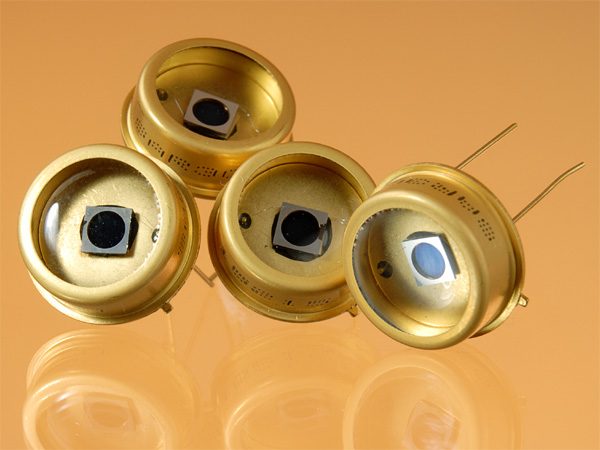


At wavelengths longer than 650 nm, the high quantum efficiency of the APD contributes to better signal-to-noise performance. While the APD and PMT show similar signal-to-noise performance in the visible spectral range, the dark noise of the APD detector reduces the sensitivity at low signal levels.

These measurements illustrate the differences in APD and PMT performance at different wavelengths and signal intensity levels. The ratios of the intensities of the CD4- and CD4+ populations were found to be similar for both detectors in the visible wavelengths, but only the APD was able to separate these populations at wavelengths above 800 nm. CD4-positive cells labeled with antibody-conjugated phycoerythrin or 800 nm quantum dots were identified by simultaneous detection using the APD and the PMT. Both the APD and PMTs were used to measure the signal-to-noise response for a set of six peak calibration beads over the 530-800 nm wavelength range. These measurements showed the relative changes in the signal-to-noise performance of the APD and PMT over a broad spectral range. The resolution of the APD and PMT was compared for flow cytometry applications using a pulsed light-emitting diode source over the 500-1060 nm spectral range. The APD used an additional amplifier stage to match the internal gain of the PMT. A breadboard flow cytometer test bench was constructed to compare the performance of PMTs and APD detectors. A comparison of the wavelength-dependent performance of the APD and PMT was carried out using pulsed light-emitting diode sources, calibrated test beads, and biological samples. We demonstrate the flow cytometric applications of silicon avalanche photodiodes (APDs), which have improved red sensitivity and a working fluorescence detection range beyond 1,000 nm. The photomultiplier tubes (PMTs) used to detect fluorescence in current instruments limit the sensitivity in the long wavelength spectral range. Polychromatic flow cytometry enables detailed identification of cell phenotype using multiple fluorescent parameters.


 0 kommentar(er)
0 kommentar(er)
